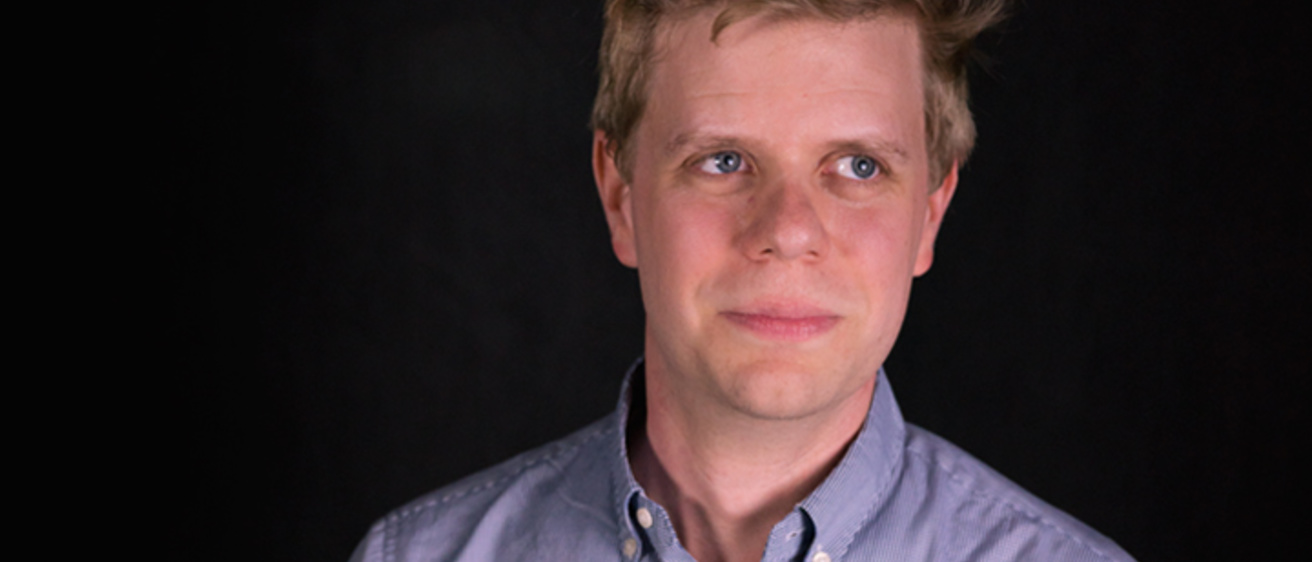Learning in environments of collaborative play
Video by Mei-Ling Shaw Williams
Benjamin DeVane wants all students to see how learning about STEM can be both collaborative and fun.
STEM education is becoming more of a collaborative venture in schools, says DeVane, a UI College of Education assistant professor in the Education Psychology Program. His research seeks to encourage collaborative learning environments, while avoiding the pitfalls of designing the dreaded “group project” where one person does all the work while others look on.
“Working together is a big part of 21st century learning,” says DeVane. “In terms of collaborative learning, we’re looking at using technologies that support the kinds of learning that we need in the 21st century and the kinds of skills we need in the 21st century.”
“We’re looking at using technologies that support the kinds of learning that we need in the 21st century and the kinds of skills we need in the 21st century.”
- Benjamin DeVane
From a young age, when he first encountered computers in libraries, DeVane says the virtual world and how we can learn from it has always sparked his interest.
“Being able to create new things in a virtual space was always fascinating to me,” says DeVane. “I’ve always enjoyed learning through play and learning through investigation and inquiry. That’s what has guided and inspired me.”
DeVane’s research is the basis for a 3,000-square-foot exhibit in the Iowa Children’s Museum called, “Notion of Motion.” The exhibit, set to open in 2018, will invite children to design their own skateboarding courses and platforms using both virtual and physical building blocks. This effort is funded through a three-year $1.2 million grant from the National Science Foundation. DeVane says the goal of the exhibit is to encourage 5- to 8-year-old kids and their families to learn about physics through games and play.
DeVane, who has a background in computer science, joined the UI in 2013 because he wanted his research to make an impact on the world. He teaches master’s level courses on designing learning environments, which includes instruction on technology-based learning spaces. The concepts explored in his research are implemented in many of these courses, which are often collaborative and interdisciplinary.
A big part of DeVane’s research finds him and his colleagues developing tools for teachers in the classroom, as well as those teaching children in learning spaces such as museums or during afterschool programs. These tools can also be used by parents, which DeVane notes is of great importance. He says the influence of parents or mentors on a student’s perception of science education is very significant.
Having an adult who can help guide a child’s reflection while they’re using technology and help assist them with problem solving can be tremendously important in having them master that knowledge.
“When they learn best is when they have that mentor there who’s helping them understand and interpret and reflect on things,” says DeVane.
This is why things like the “Notion of Motion” exhibit and its associated software are important. They engage parents and students alike, notes DeVane.
Looking ahead, DeVane says he’d like to see the software ported to tablet form so that it could be used in classrooms or at home for these students. This kind of engagement speaks to the interests of children by showing them things they do in video games can be relevant to how they learn in school.
DeVane is helping to develop the next generation of models for teaching and learning. He notes that, with more technologically-focused classrooms, the kinds of learning which will take place at the “Notion of Motion” exhibit could become commonplace in classrooms of the very near future.
“We are taking an approach that hasn’t been done before in terms of museum exhibit design,” says DeVane. “We’re right at the tip of the curve.”
Read more from the 2016-17 College of Education Annual Report.
